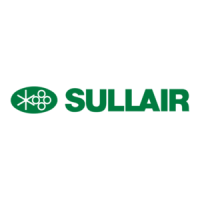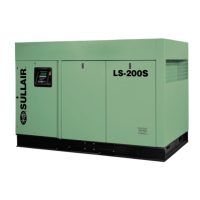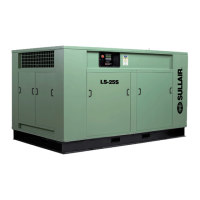Section 1
SAFETY
2
wheeledjack as you would for the standard screw
jack. Pull the pin connecting the jack to the draw-
bar and raise the screw jack to its full up position.
Rotate the screw jack to its stowed position, par-
allel to the drawbar, and reinsert the pin. Make
sure the jack is secured in place prior to towing.
WARNING
!
This equipment may be tongue heavy. DO NOT
attempt to raise or lower the drawbar by hand if
the weight is more than you can saf ely handle.
8. On two---wheeled models, fully retract front
screw jack and any rear stabilizer legs. If a cast -
er wheel is provided on the screw j ack it is part of
the screw jack and can not be removed. Follow
the same procedure for stowing away the
wheeled jack as you would for the standard
screw jack. Pull the pin connecting the jack to
the drawbar and raise the screw jack to its full up
position. Rotate the screw jack to its stowed
position, parallel to the drawbar, and reinsert the
pin. Make sure the jack is secured in place prior
to towing.
9. Make sure tires are in good condition and are
the size (load range) specified and are inflated to
the specified pressures. DO NOT change the
tire size or type. Also, make sure wheel bolts,
lugs or nuts are tightened to the specified
torques.
10.Ifprovided,makesurealldualstop,taildirec-
tional and clearance lights are operating prop-
erly and that their lenses are clean and func-
tional. Also, make sure all reflectors and reflect-
ing surfaces, including the slow moving vehicle
emblem on compressors provided with same,
are clean and functional.
11. Make sure all service air hoses (not air brake
hoses) are disconnected or are fully stowed and
secured on hose reels, if provided.
12. Make sure all access doors and tool box cov-
ers are closed and latched. I f the compressor is
large enough to hold a man, make sure all per-
sonnel are out before closing and latching ac-
cess doors.
13. Make sure parking brakes in towing vehicle
are set, or that its wheel are chocked or blocked,
or that it is otherwise restrained from moving.
Then, release the compressor parking brakes, if
provided.
14. Make sure the compressor w heels are not
chocked or blocked, and that all tie---downs, if
any, are free.
15. Test running brake operation, including
breakaway switch operation if provided, before
attempting to tow the compressor at its rated
speed or less when conditions prevail.
16. DO NOT carry loose or inappropriate tools,
equipment or supplies on or in the compressor.
17. DO NOT load this equipment with accesso-
ries or tools such that it is unbalanced from side
to side or front to back. Such unbalance will re-
duce the towability of this equipment and may
increase the possibility of tipping, rolling over,
jackknifing, etc. Loss of control of the towing ve-
hicle may result.
B. TOWING
1. Observe all Federal, State, and Local laws
while towing this equipment (including those
specifying minimum speed).
2. DO NOT exceed the towing s peeds listed be-
low under ideal conditions. Reduce your speed
according to posted speed limits, weather, traf-
fic, road or terrain conditions.
a. Two axle four---wheel steerable models:
15MPH (24KMPH).
b. All other models: 55 MPH (88KMPH).
3. Remember that the portable air compressor
may approach or exceed the weight of the tow-
ing vehicle. Maintain increased stopping dis-
tances accordingly. DO NOT make sudden lane
changes, U---turns, or other maneuvers. Such
maneuvers can cause the compressor to tip, roll
over, jackknife or slide and cause loss of control
of the towing vehicle. Tipping, rolling over, etc.
can occur suddenly without warning. U---turns
especially should be made slowly and carefully.
4.Avoidgradesinexcessof15_ (27%).
5. Avoid potholes, rocks and other obstructions,
and soft s houlders or unstable terrain.
6. Maneuver in a manner that will not exceed the
freedom of motion of the compressor’s drawbar
and/or coupling device, in or on the towing ve-
hicle’s coupling device and/or a djacent struc -
ture whether towing forward or backing up, re-
gardless of the terrain being traversed.
7. DO NOT permit personnel t o ride in or on the
compressor.
8. Make sure the area behind, in front of, and un-
der the compressor is clear of all personnel and
obstructions prior to towing in any direction.
9. DO NOT permit personnel to stand or ride on
the drawbar, or to stand or walk between the
compressor and the towing vehicle.
C. PARKING OR LOCATING COMPRESSOR
1. Park or locate compressor on a level surface,
if possible. If not, park or locate compressor
across grade so the compressor does not tend
to roll downhill. DO NOT park or locate com-
pressor on grades exceeding 15_ (27%).
2. Make sure compressor is parked or located
on a firm surfa ce th an can support its weight.
3. Park or locate compressor so t he wind, if any,
tends to carry the exhaust fumes and radiator
heat away from the compressor air inlet open -
ings, a nd also where the compressor will not be
exposed to excessive dust from the work site.

